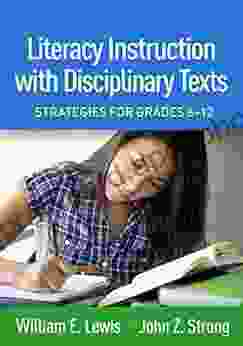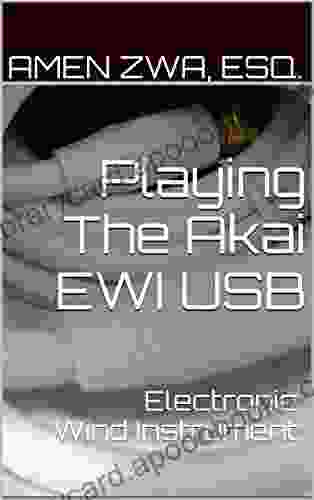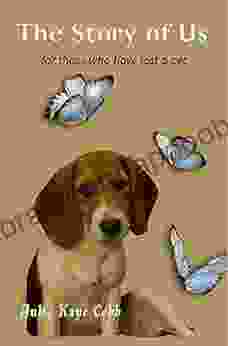Unlocking Literacy with Disciplinary Texts: A Comprehensive Guide for Grades 1-2

In today's knowledge-based society, literacy is more important than ever before. Students need to be able to read, write, and communicate effectively in Free Download to succeed in school, in their careers, and in life. Disciplinary texts are a type of text that students will encounter in school and beyond. These texts are found in textbooks, articles, and other materials that students read in Free Download to learn about a particular subject area. Disciplinary texts often contain complex concepts and vocabulary, which can make them difficult for students to understand.
5 out of 5
| Language | : | English |
| File size | : | 8834 KB |
| Text-to-Speech | : | Enabled |
| Enhanced typesetting | : | Enabled |
| Word Wise | : | Enabled |
| Print length | : | 401 pages |
| Screen Reader | : | Supported |
This article provides a comprehensive guide to literacy instruction with disciplinary texts for grades 1-2. The article covers a variety of topics, including:
- The importance of disciplinary texts in the classroom
- Strategies for teaching disciplinary texts
- Activities to help students understand disciplinary texts
- Assessment tools for tracking student progress with disciplinary texts
The Importance of Disciplinary Texts in the Classroom
Disciplinary texts are an important part of the classroom for a number of reasons. First, disciplinary texts provide students with the opportunity to learn about new content. Disciplinary texts are often written by experts in a particular field, so they can provide students with access to up-to-date information about the latest research and discoveries. Second, disciplinary texts help students to develop their critical thinking skills. Disciplinary texts are often complex and challenging, which can force students to think critically about the information they are reading. Third, disciplinary texts help students to develop their vocabulary. Disciplinary texts are often full of new and unfamiliar words, which can help students to expand their vocabulary and learn new words that are specific to a particular field.
Strategies for Teaching Disciplinary Texts
There are a variety of strategies that teachers can use to help students learn to read and understand disciplinary texts. Some of the most effective strategies include:
- Provide students with background knowledge before reading. Before students read a disciplinary text, it is helpful to provide them with some background knowledge about the topic. This can help students to activate their prior knowledge and make connections between the new information and what they already know.
- Preview the text with students. Before students read a disciplinary text, take some time to preview the text with them. Point out the different sections of the text, the headings, and any important vocabulary words. This will help students to get a better understanding of the structure of the text and what they are going to be reading about.
- Read the text aloud to students. Reading the text aloud to students can help them to understand the unfamiliar vocabulary and concepts. It can also help students to get a feel for the rhythm and flow of the text.
- Discuss the text with students. After students have read the text, take some time to discuss the text with them. Ask them questions to ensure that they understand the concepts and vocabulary. You can also lead a discussion about the main ideas of the text.
- Have students summarize the text. Summarizing the text can help students to demonstrate their understanding of the text. You can have students summarize the text orally or in writing.
- Have students complete a comprehension activity. There are a variety of comprehension activities that you can have students complete to assess their understanding of the text. Some examples of comprehension activities include:
- Multiple choice questions
- True/false questions
- Short answer questions
- Essay questions
Activities to Help Students Understand Disciplinary Texts
In addition to the strategies listed above, there are a number of activities that you can use to help students understand disciplinary texts. Some of these activities include:
- Create a word wall. A word wall is a display of important vocabulary words that students can refer to throughout the year. You can add new words to the word wall as you come across them in disciplinary texts.
- Play vocabulary games. There are a variety of vocabulary games that you can play with students to help them learn new words. Some examples of vocabulary games include:
- Word puzzles
- Crosswords
- Charades
- Pictionary
- Use graphic organizers. Graphic organizers can help students to visually represent the information they are reading. Some examples of graphic organizers include:
- Mind maps
- Flow charts
- Venn diagrams
- Have students create presentations. Having students create presentations about disciplinary texts can help them to demonstrate their understanding of the text. Students can create presentations using a variety of tools, such as PowerPoint, Google Slides, or Prezi.
- Take field trips. Taking field trips can help students to connect disciplinary texts to the real world. For example, if you are reading a text about the solar system, you could take students to a planetarium or a science museum.
Assessment Tools for Tracking Student Progress with Disciplinary Texts
It is important to track student progress with disciplinary texts so that you can identify students who need additional support. There are a variety of assessment tools that you can use to track student progress, including:
- Informal assessments. Informal assessments are quick and easy assessments that can be used to check for student understanding. Some examples of informal assessments include:
- Exit tickets
- Thumbs up/thumbs down
- Four corners
- Formal assessments. Formal assessments are more in-depth assessments that can be used to measure student learning over time. Some examples of formal assessments include:
- Quizzes
- Tests
- Essays
By using a variety of assessment tools, you can get a good understanding of student progress with disciplinary texts. This information can then be used to plan targeted instruction for students who need additional support.
Disciplinary texts are an important part of the classroom. By teaching students how to read and understand disciplinary texts, you can help them to succeed in school, in their careers, and in life. The strategies, activities, and assessment tools described in this article can help you to create a classroom environment that is supportive of literacy learning. With the right instruction and support, all students can learn to read and understand disciplinary texts.
Free Download Your Copy Today!
5 out of 5
| Language | : | English |
| File size | : | 8834 KB |
| Text-to-Speech | : | Enabled |
| Enhanced typesetting | : | Enabled |
| Word Wise | : | Enabled |
| Print length | : | 401 pages |
| Screen Reader | : | Supported |
Do you want to contribute by writing guest posts on this blog?
Please contact us and send us a resume of previous articles that you have written.
 Book
Book Novel
Novel Page
Page Chapter
Chapter Text
Text Story
Story Genre
Genre Reader
Reader Library
Library Paperback
Paperback E-book
E-book Magazine
Magazine Newspaper
Newspaper Paragraph
Paragraph Sentence
Sentence Bookmark
Bookmark Shelf
Shelf Glossary
Glossary Bibliography
Bibliography Foreword
Foreword Preface
Preface Synopsis
Synopsis Annotation
Annotation Footnote
Footnote Manuscript
Manuscript Scroll
Scroll Codex
Codex Tome
Tome Bestseller
Bestseller Classics
Classics Library card
Library card Narrative
Narrative Biography
Biography Autobiography
Autobiography Memoir
Memoir Reference
Reference Encyclopedia
Encyclopedia Anderson A Jimmerson
Anderson A Jimmerson Mike Exinger
Mike Exinger Rex Bunn
Rex Bunn Andrea Benjamin
Andrea Benjamin Melissa Baldwin
Melissa Baldwin A K Koonce
A K Koonce Moya Cannon
Moya Cannon James W Gaynor
James W Gaynor Jen Nelles
Jen Nelles Niomie Roland
Niomie Roland C A Fletcher
C A Fletcher Amy Odell
Amy Odell Burton Watson
Burton Watson Jonathan D Cohen
Jonathan D Cohen Thomas Lynch
Thomas Lynch Elton John
Elton John Hermes De Paula
Hermes De Paula Robin Barratt
Robin Barratt Amy Vaughan Spencer
Amy Vaughan Spencer Miriam Neff
Miriam Neff
Light bulbAdvertise smarter! Our strategic ad space ensures maximum exposure. Reserve your spot today!
 Ernest HemingwayFollow ·2.2k
Ernest HemingwayFollow ·2.2k Shaun NelsonFollow ·9.9k
Shaun NelsonFollow ·9.9k Julio Ramón RibeyroFollow ·13.3k
Julio Ramón RibeyroFollow ·13.3k Derek BellFollow ·11.1k
Derek BellFollow ·11.1k Darren NelsonFollow ·3.1k
Darren NelsonFollow ·3.1k Darren BlairFollow ·13.1k
Darren BlairFollow ·13.1k Kenneth ParkerFollow ·6.5k
Kenneth ParkerFollow ·6.5k W. Somerset MaughamFollow ·4.7k
W. Somerset MaughamFollow ·4.7k

 Roald Dahl
Roald DahlImmerse Yourself in a Mesmerizing Tapestry of Creativity:...
Prepare to be captivated by "Spectra," an...

 Clarence Brooks
Clarence BrooksUnleash Your Inner Taylor with Red Piano Vocal Guitar:...
Embrace the Red Era...
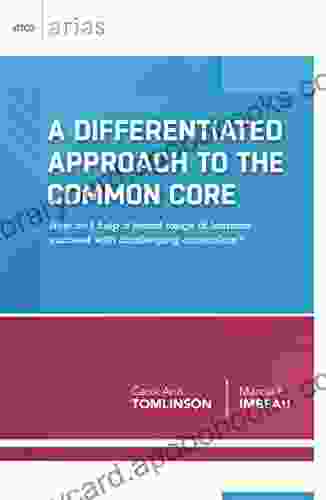
 Jeffrey Hayes
Jeffrey HayesUnlock Your Child's Academic Potential: A Comprehensive...
In today's rapidly changing...

 William Golding
William GoldingBrave Elizabeth: A Captivating Tale of Resilience and...
Immerse Yourself in a Riveting Historical...
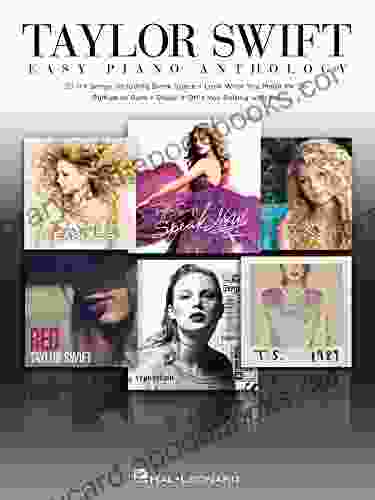
 Curtis Stewart
Curtis StewartUnveiling the Heartfelt Melodies of Taylor Swift: A...
Step into the enchanting world of Taylor...
5 out of 5
| Language | : | English |
| File size | : | 8834 KB |
| Text-to-Speech | : | Enabled |
| Enhanced typesetting | : | Enabled |
| Word Wise | : | Enabled |
| Print length | : | 401 pages |
| Screen Reader | : | Supported |


